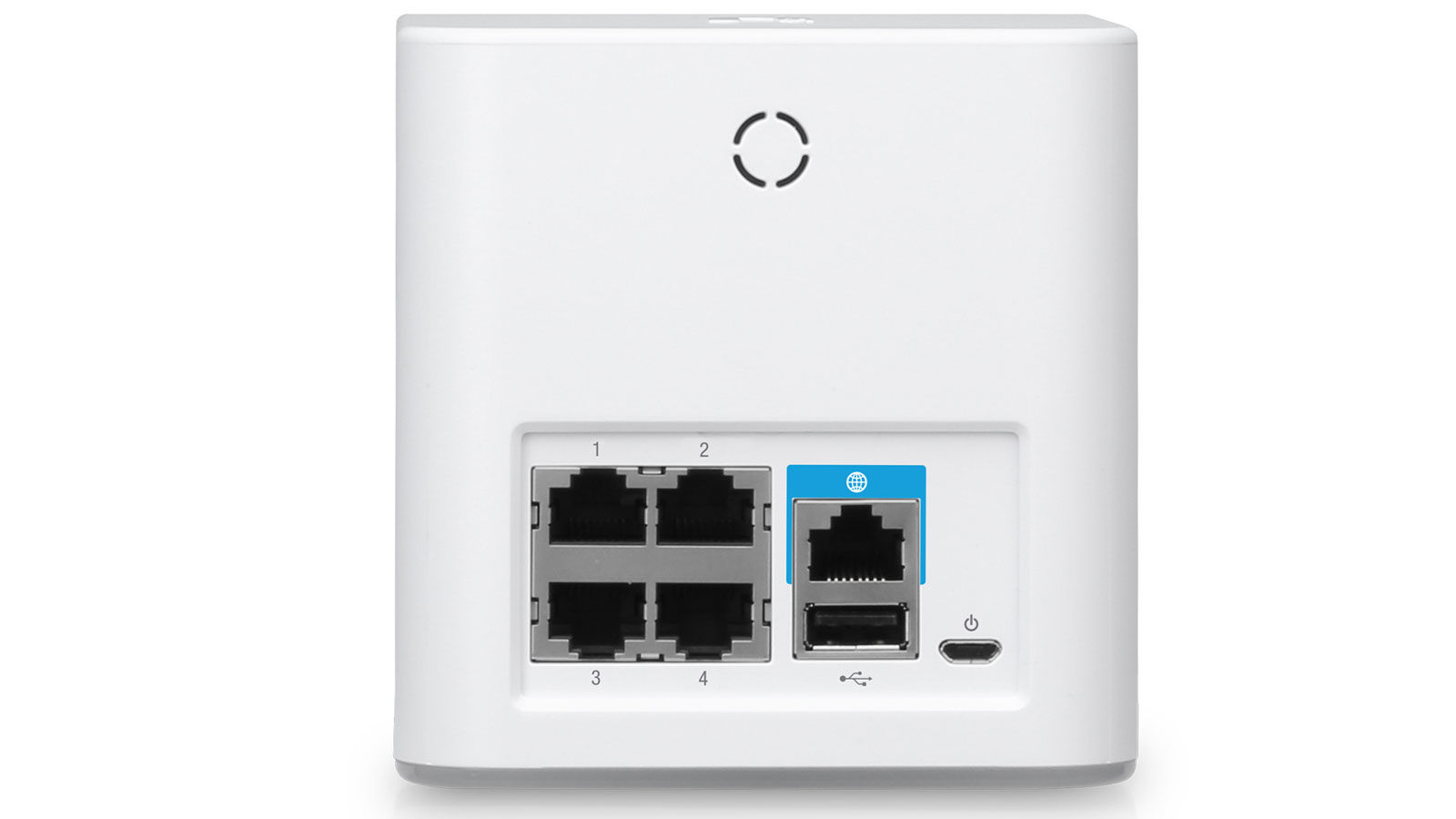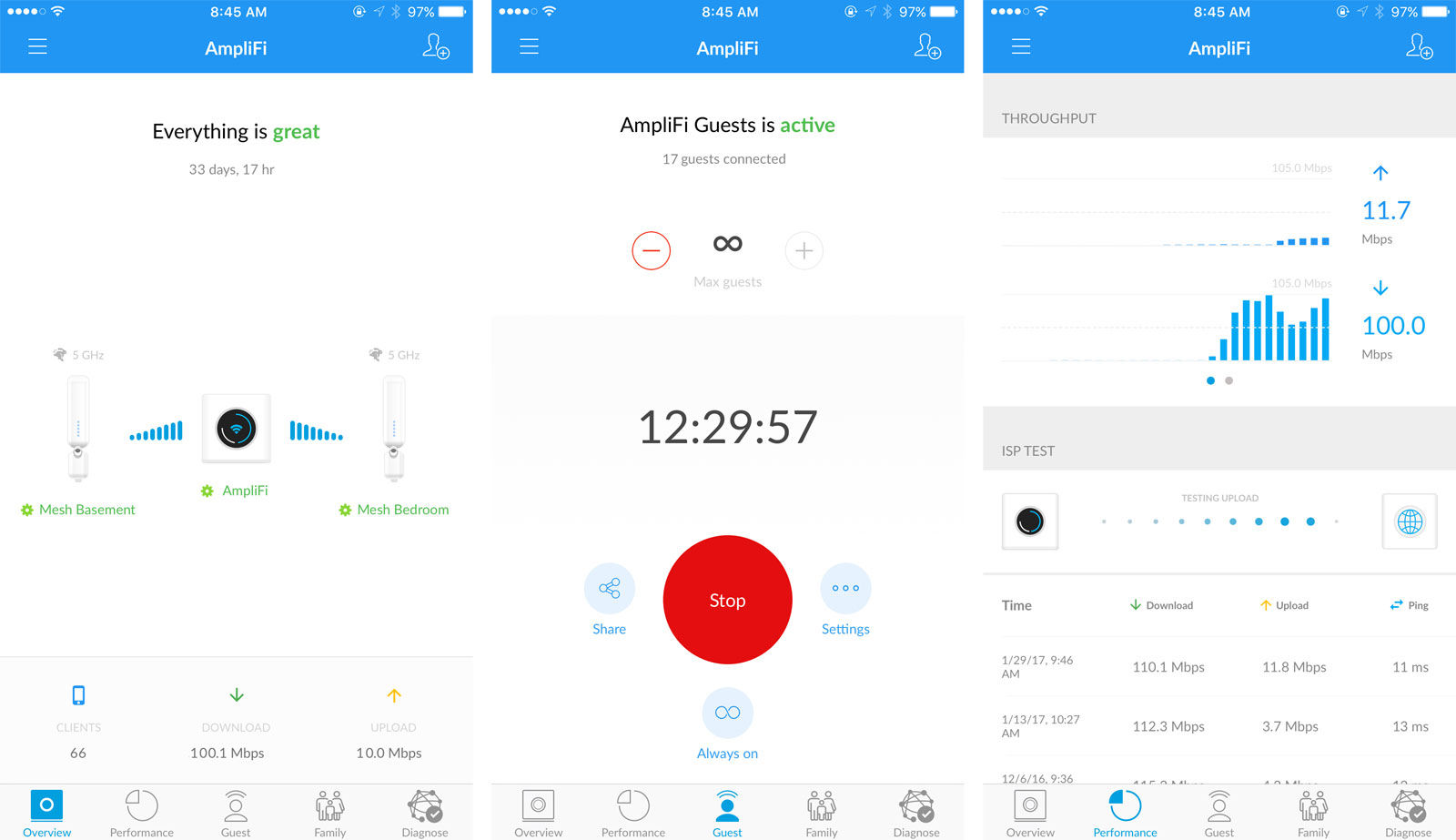Yet, most mesh networking systems still take the same basic approach. They all provide you with a kit that – depending on price – includes two or three virtually identical routers, which you can place in different rooms throughout your home in order to provide wider and more reliable Wi-Fi coverage than you would normally get from just a single router. The new AmpliFi HD from Ubiquiti is the first mesh networking kit we’ve seen that manages to come up with a different approach of its own. Mind you, the founder of Ubiquiti, Robert Pera, worked at Apple back in the early 2000s, and was part of the team that developed the company’s first AirPort routers – so he’s got a good pedigree with Wi-Fi networking.
Ubiquiti AmpliFi HD: Price
That puts the AmpliFi at a disadvantage to its competitors since this makes it more expensive than almost every other mesh networking system. However, the three-piece kit claims to cover homes up to 20,000 square feet in size, so it’s probably a serious case of overkill for most people. Fortunately, those of us that dwell in more modest abodes can buy the router on its own for £150 (US$149), and individual mesh points for £133 each (US$129), so a two-piece kit would cost just over £280, which is more reasonable, and in line with the most expensive standalone 802.11ac routers.
Ubiquiti AmpliFi HD: Features & Design
As we’ve mentioned, most mesh networking systems include either two or three routers that are all virtually identical to each other. However, the AmpliFi router and mesh points look completely different, and provide different features. The main router is a cube-shaped lump of white plastic with a small, touch-sensitive LED display – in fact, it looks more like a little bedside alarm clock than a conventional router (and it even shows the time when the router is idle). The router only measures 4in (100mm) on each side, but the top half of the little cube contains a 3×3 antenna array that provides dual-band 802.11ac Wi-Fi with a top speed of 1750Mb/s. Tucked around the back there are five Gigabit Ethernet ports, with one port used to connect to your existing modem/router for Internet access, and four available for wired connections to devices such as games consoles and set-top boxes. There’s a USB port as well, although this is ‘reserved for future use’, and doesn’t give you the option of connecting a printer or USB storage device. The mesh points are completely different – essentially just consisting of a large plastic Wi-Fi aerial that measures 9.5in long and 2.2in wide (245x55mm). Each mesh point has a three-prong plug on the base, so you just plug it directly into a power socket in any convenient location. There are no additional Ethernet ports on the mesh points, though, and some people might prefer a system that does provide Ethernet as well.
Setup
The AmpliFi app is available for both iOS and Android devices but, if you prefer, you can also use the touch-screen on the router to view the network settings and then configure the router through a web browser on a computer. Robert Pera obviously hasn’t forgotten his time at Apple as the AmpliFi app is very well designed, helping beginners to get started quickly and easily, while also providing more advanced features for people who want to dig a little deeper. The app uses Bluetooth to initially pair with the router and mesh points, and then prompts you to name the new AmpliFi network and create a password, before switching over to the new Wi-Fi network. To keep things simple, the app’s Home screen displays four icons that allow you to quickly view diagnostic and performance information, create a temporary guest network, and create profiles for controlling internet access for specific devices or individual family members. If you want to go further then there’s also a ‘System’ icon that provides access to more advanced features, such as port-forwarding and remote access. There’s also a useful ‘bridge’ option that can connect the new AmpliFi network to your existing network – which allowed me to carry on using the NAS drive that I have plugged into my normal Home Hub router.
Performance
With the main router set up in my front room I was able to get average speeds of 275Mb/s from the new AmpliFi network. That’s not the highest speed we’ve seen from a mesh system, but it still far outstrips the meagre 40Mbps that my old BT HomeHub normally provides. However, the real improvement came when I moved to my office right at the back of the building. My BT router struggles to send a signal to that room, so I normally use a powerline adaptor to provide a wired Ethernet connection for my office devices. But, with the mesh point plugged in, the speed of the AmpliFi network barely dipped at all, hanging in at an impressively steady 260Mb/s.
Should I buy the full AmpliFi kit?
The three-piece AmpliFi kit that we review here is quite expensive and probably won’t be necessary for most homes, so it’s good that you do also have the option of buying the router with a single mesh point for around £280. That’s still a little more expensive than some of the other mesh networking systems we’ve seen recently – and features such as the touch-screen display obviously account for the high price – but we were impressed by the consistently strong performance of the AmpliFi network, even in less accessible rooms at home. We also like the simplicity of the AmpliFi app, which is admirably easy to use, whilst also providing more advanced features for people who want greater control over their home or office network.


